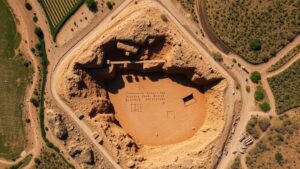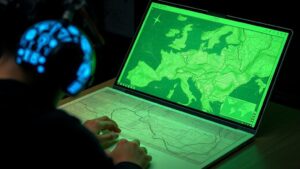How AI Enhances Cross-Referencing Between Historical Archaeological Reports
How AI Enhances Cross-Referencing Between Historical Archaeological Reports
Archaeology is a field that relies heavily on the analysis of historical records, excavation reports, and a vast array of data sources. As the volume of archaeological data increases, the challenge of cross-referencing historical archaeological reports becomes more complex. Artificial Intelligence (AI) stands out as a transformative tool in streamlining and enhancing this process. This article explores how AI contributes to the effective cross-referencing of historical archaeological documents, improving research efficiency and accuracy.
The Role of AI in Data Management
AIs capabilities are primarily anchored in its ability to manage and analyze vast quantities of data quickly and efficiently. For example, natural language processing (NLP) tools can parse through extensive archaeological reports and historical texts to extract relevant information such as site descriptions, artifact classifications, and dating techniques. A case in point is the Digital Archaeological Record (tDAR), which utilizes AI to provide a comprehensive database for Arizona’s archaeological reports, facilitating easier access and references.
Enhancing Searchability with Machine Learning
Machine learning algorithms can significantly improve the searchability of historical reports. e algorithms learn from patterns within the data and can assist in identifying relationships between disparate reports. For example, the Archaeological Data Service (ADS) in the UK employs machine learning techniques to allow researchers to find relevant materials based on keyword searches or themes. This markedly stands in contrast to traditional search methods, where researchers must manually sift through countless documents.
Integration of Multimodal Data
AI facilitates the integration of multimodal data, which includes textual records, images, and geographical information systems (GIS). A relevant application is the use of AI-driven image recognition technology to analyze photographs of artifacts. For example, projects in the Mediterranean region have utilized AI algorithms to identify similar ceramic patterns across different excavation sites, establishing causal relationships and trade routes through data integration.
Improved Accuracy and Reduced Bias
AI systems can potentially reduce human bias inherent in the interpretation of archaeological findings. Traditional methods may be subject to the researchers subjective interpretations, which can affect the reliability of cross-referencing. AIs data-driven approach provides a more objective framework for analyzing archaeological reports. For example, the use of AI in analyzing historical climate data, such as the research conducted by the National Oceanic and Atmospheric Administration (NOAA), allows archaeologists to cross-reference archaeological findings against large datasets of climatic changes, thus enhancing accuracy.
Case Studies of AI Useation
- Case Study 1: The use of AI in the processing of excavation reports at the site of Çatalhöyük, Turkey, has demonstrated improved methods of artifact classification and context reconstruction, allowing researchers to draw connections between findings over millennia.
- Case Study 2: The Automating Heritage project integrates AI to classify and analyze artifacts from the Roman Empire, leading researchers to uncover previously overlooked influences in trade and culture across regions.
Challenges and Considerations
Despite its benefits, AI in archaeology presents challenges that must be addressed. These include concerns about data privacy, the need for high-quality training data, and the potential for over-reliance on automated systems. Notably, the National Park Service’s trials with AI algorithms revealed inconsistencies in data interpretation, emphasizing the need for human oversight when combining AI with archaeological methodologies.
Future Directions
Moving forward, the integration of AI in archaeology is expected to grow. Emerging technologies, such as deep learning and advanced neural networks, could provide even deeper insights into historical contexts. Researchers are encouraged to adopt interdisciplinary approaches, combining AI with archaeological science, history, and data analytics, to enhance cross-referencing capabilities further.
Conclusion
AI represents a significant advancement in the field of archaeology, particularly regarding the cross-referencing of historical reports. use of machine learning algorithms, NLP techniques, and data integration frameworks enhances the accuracy and efficiency of archaeological research. As the field continues to evolve, embracing these technological innovations will be pivotal in unraveling the complexities of our historical narratives.
Researchers and practitioners are encouraged to explore collaborations with data scientists to optimize AI tools that can unveil insights previously confined to traditional methodologies. By doing so, the archaeology community can unlock a wealth of knowledge hidden within the annals of historical reports and excavations.



